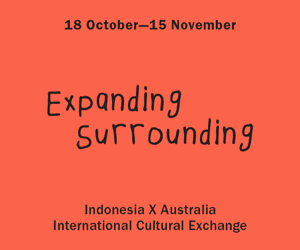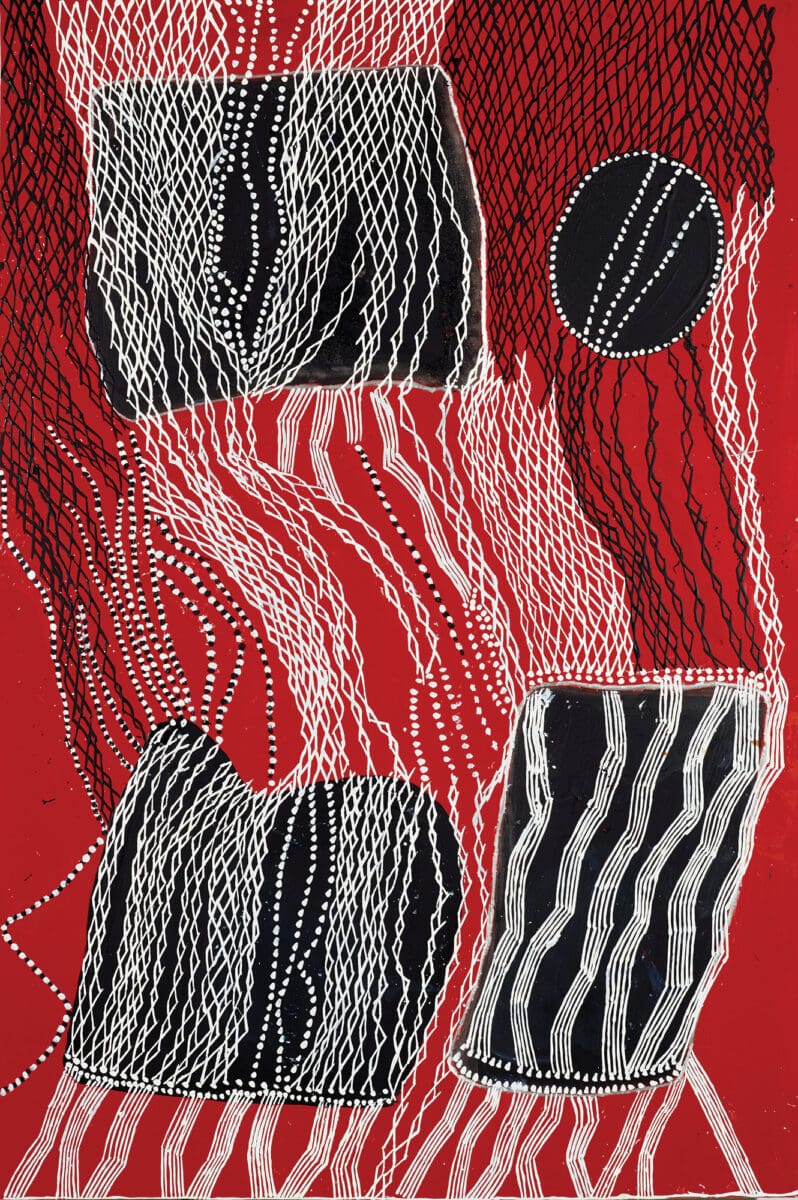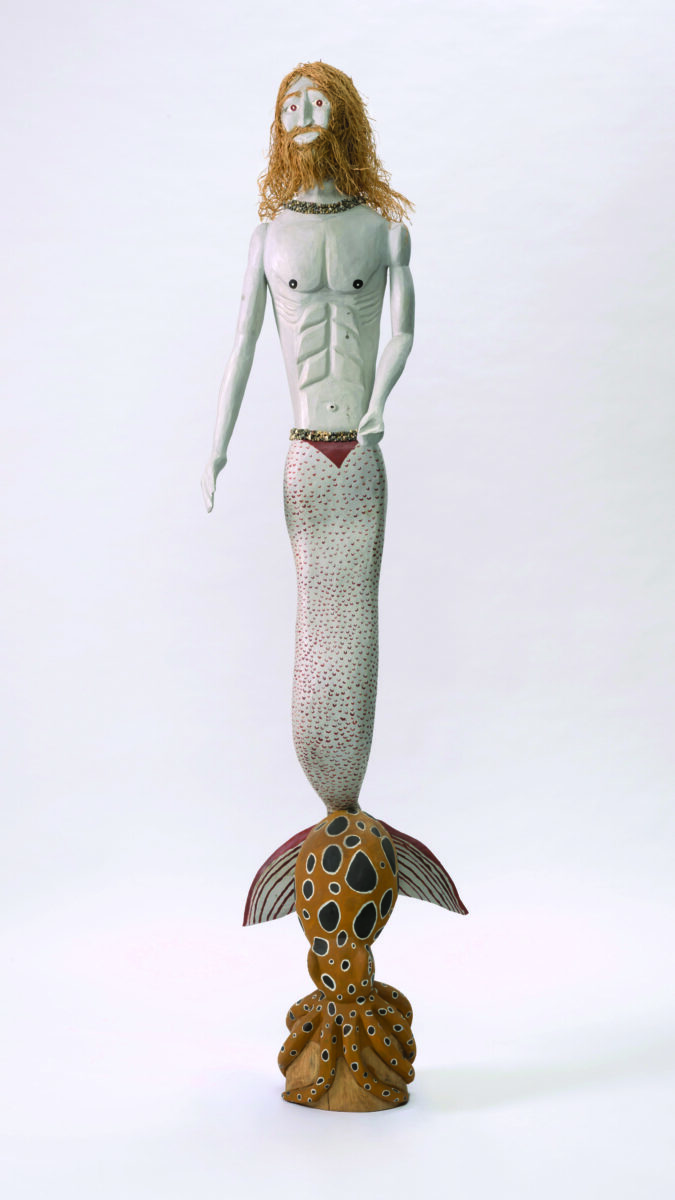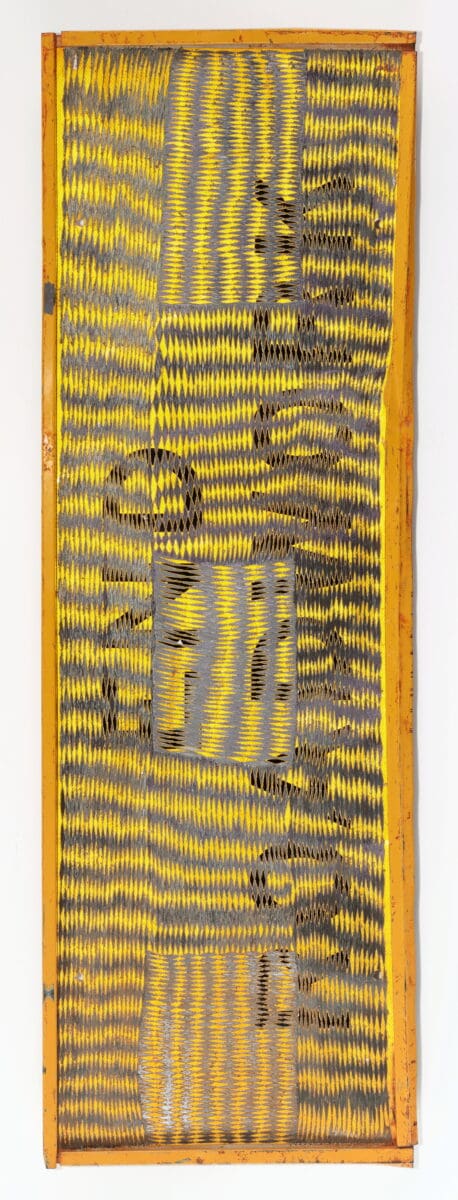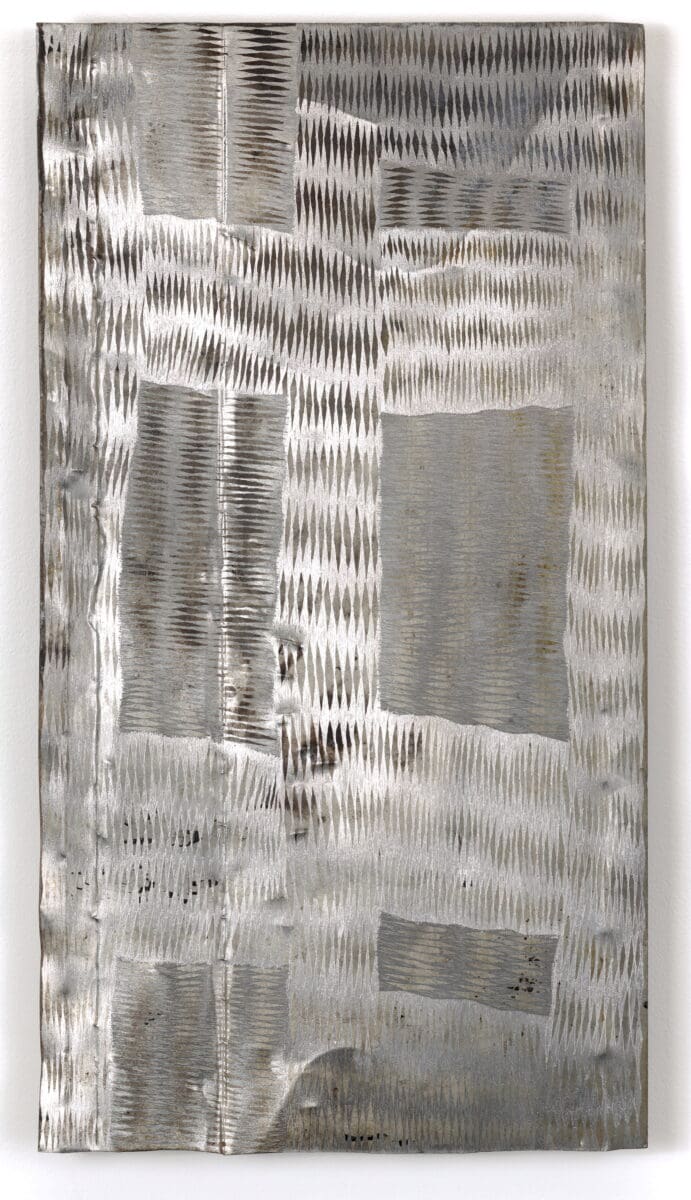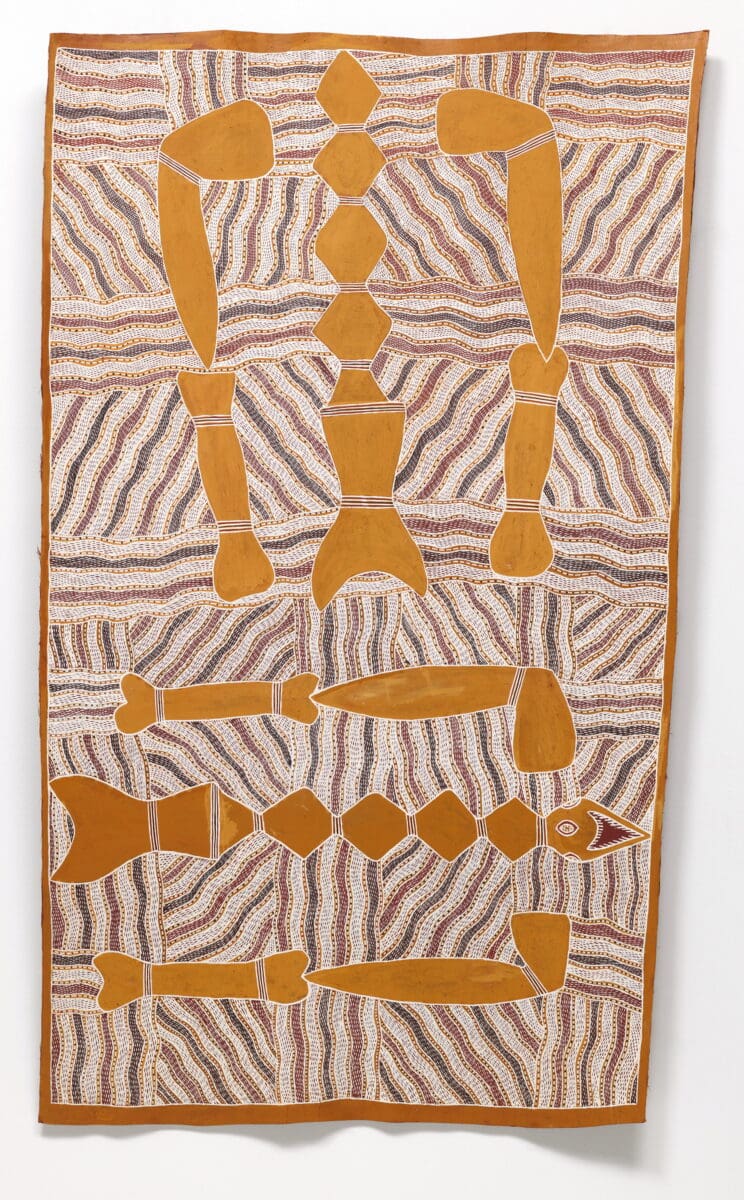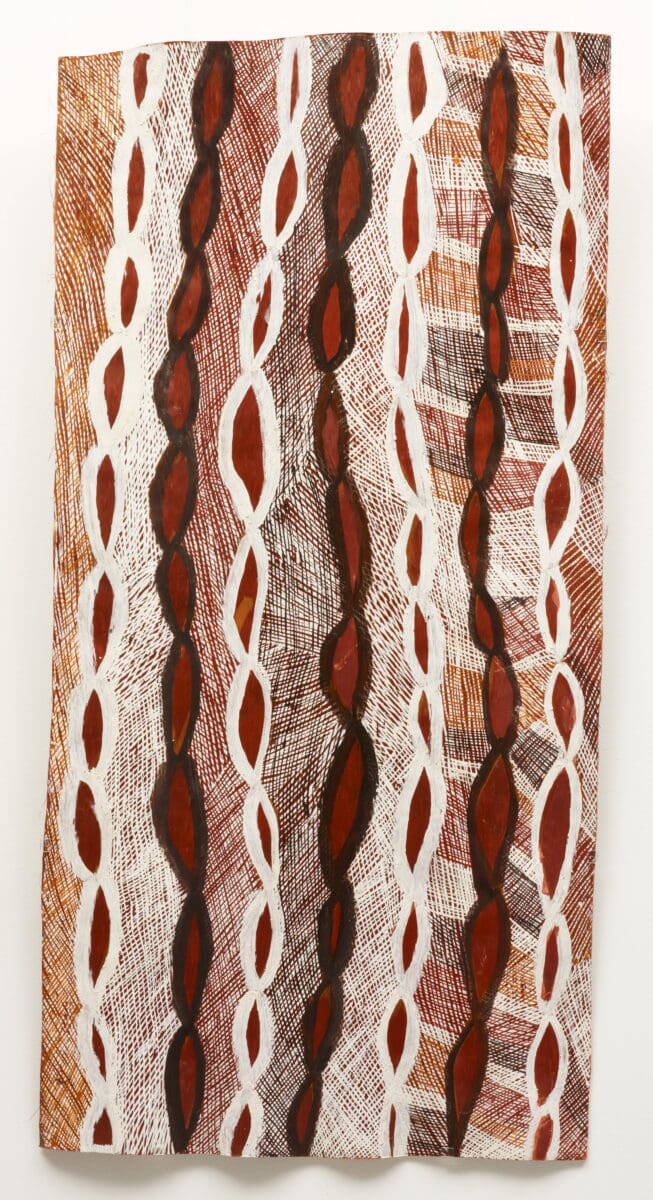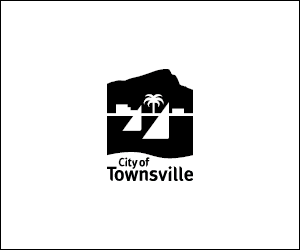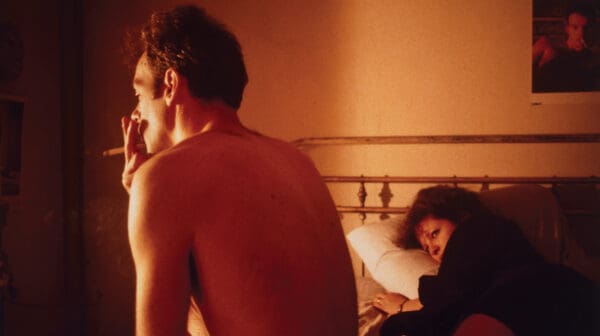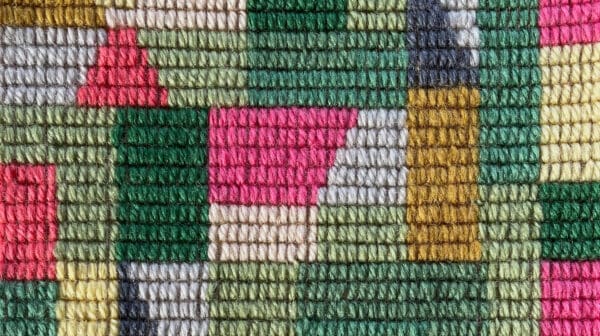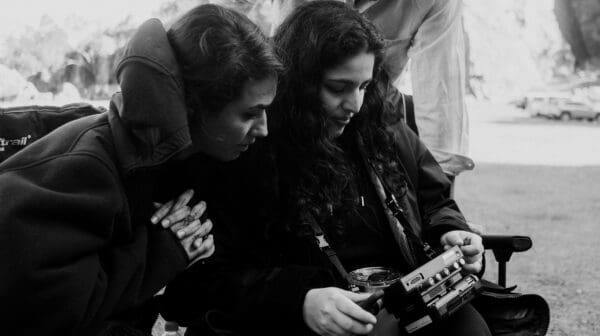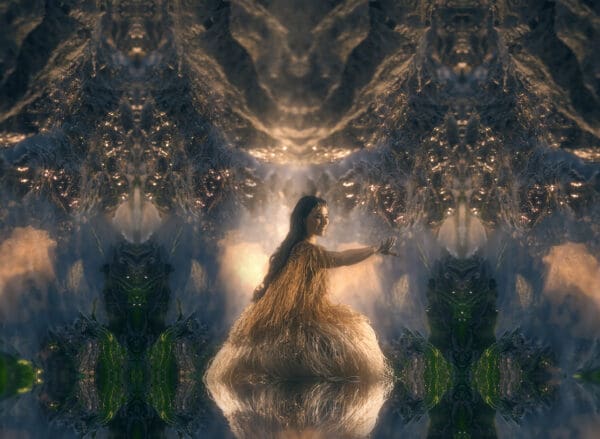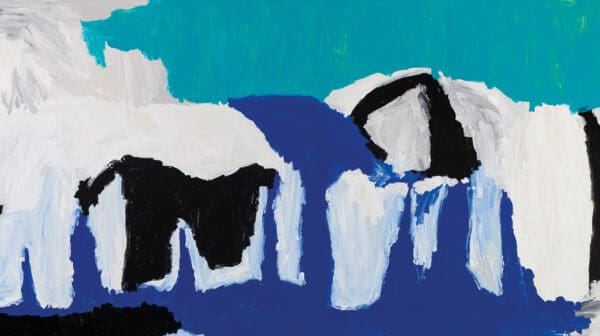Presented by the Art Gallery of New South Wales (AGNSW) in collaboration with
Buku-Larrŋgay Mulka Art Centre, Yolŋu power: the art of Yirrkala highlights artworks from some of Australia’s most renowned Yolŋu artists, as well as newly emerging talent. The show encompasses a variety of themes centred around the Yolŋu people’s connections to country; each individual piece breathes in unison with the whole. A forest of artworks with so much to share. Many of the artworks on display feature clan designs—or miny’tji—from community as well as individual explorations that mirror the deep historical and cultural importance that resides in the hearts and minds of these artists and their families.
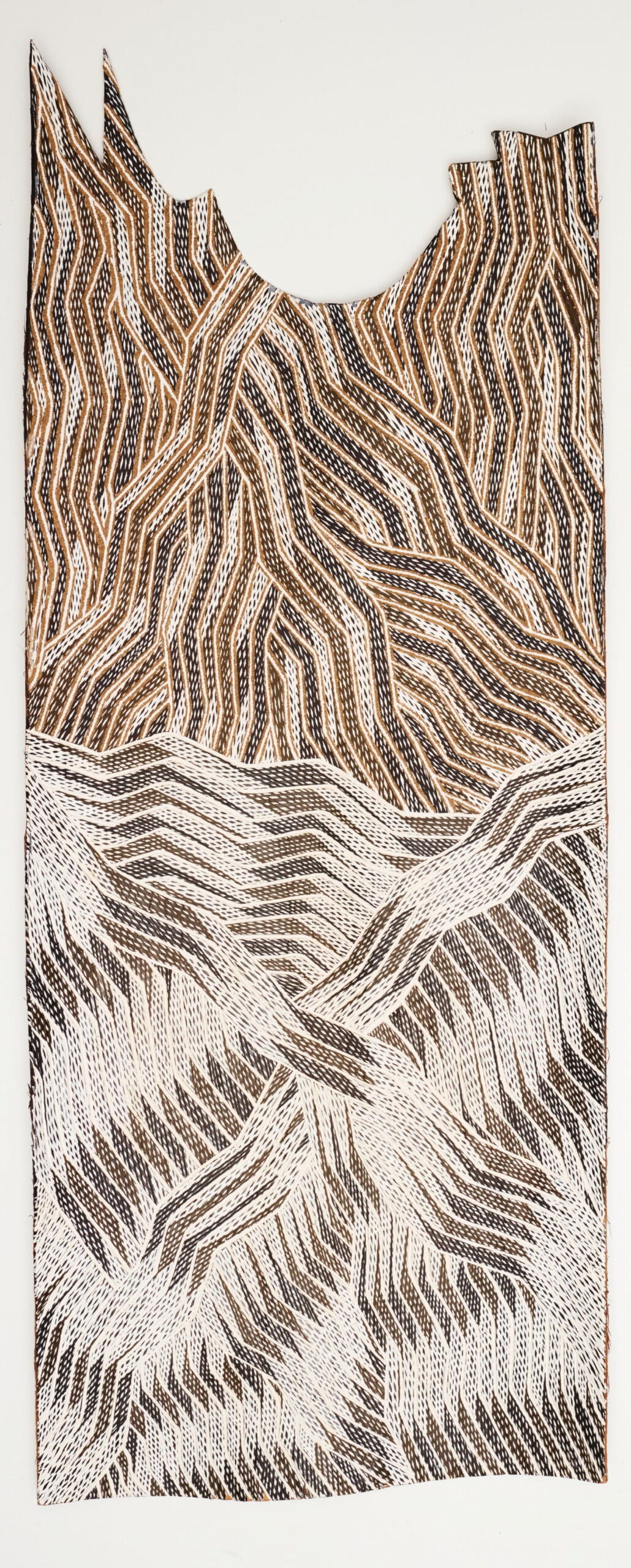
Miny’tji are sacred clan designs painted onto the body for ceremony. The patterns exist across Yolŋu art as the unifying ‘icon’ for being and existing on country through time and across place. These miny’tji are passed down from father to son, transferring between flesh and bark and now broadening out into newer contemporary materials such as metals, projection and animation. Gunybi Ganambarr is one such artist experimenting with materiality on country. His works encompass a variety of found materials he comes across, ranging from satellite dishes to road signage. These materials are introduced to country via external interference yet ultimately sit within the landscape and in one way or another become part of it. Ganambarr’s use of these cold metallic surfaces as the foundation upon which he carves his miny’tji is a reaffirmation of his Yolŋu identity. Signposts that once determined the movement or lack thereof of the Yolŋu people have, through his deliberate creative intervention, become reminders of the cultural presence that continues to persist and endure.
I was fortunate to interview Cara Pinchbeck, curator of Aboriginal and Torres Strait Islander art at the AGNSW who shared her creative visions and curatorial intent. The show features artworks spanning across decades, inherently carrying with them their own history alongside that of the Yolŋu peoples. Cara shared that “we’re not trying to tell the whole history but rather focus in on those key stylistic changes that were occurring in community as both reactions and reaffirmations of identity in a Commonwealth.” The focus on ‘stylistic changes’ are not solely visuals-based. Changes in style or form can be indicative of shifting attitudes, broadening dialogues or simply a natural progression in a long line of continuous cultural practice.
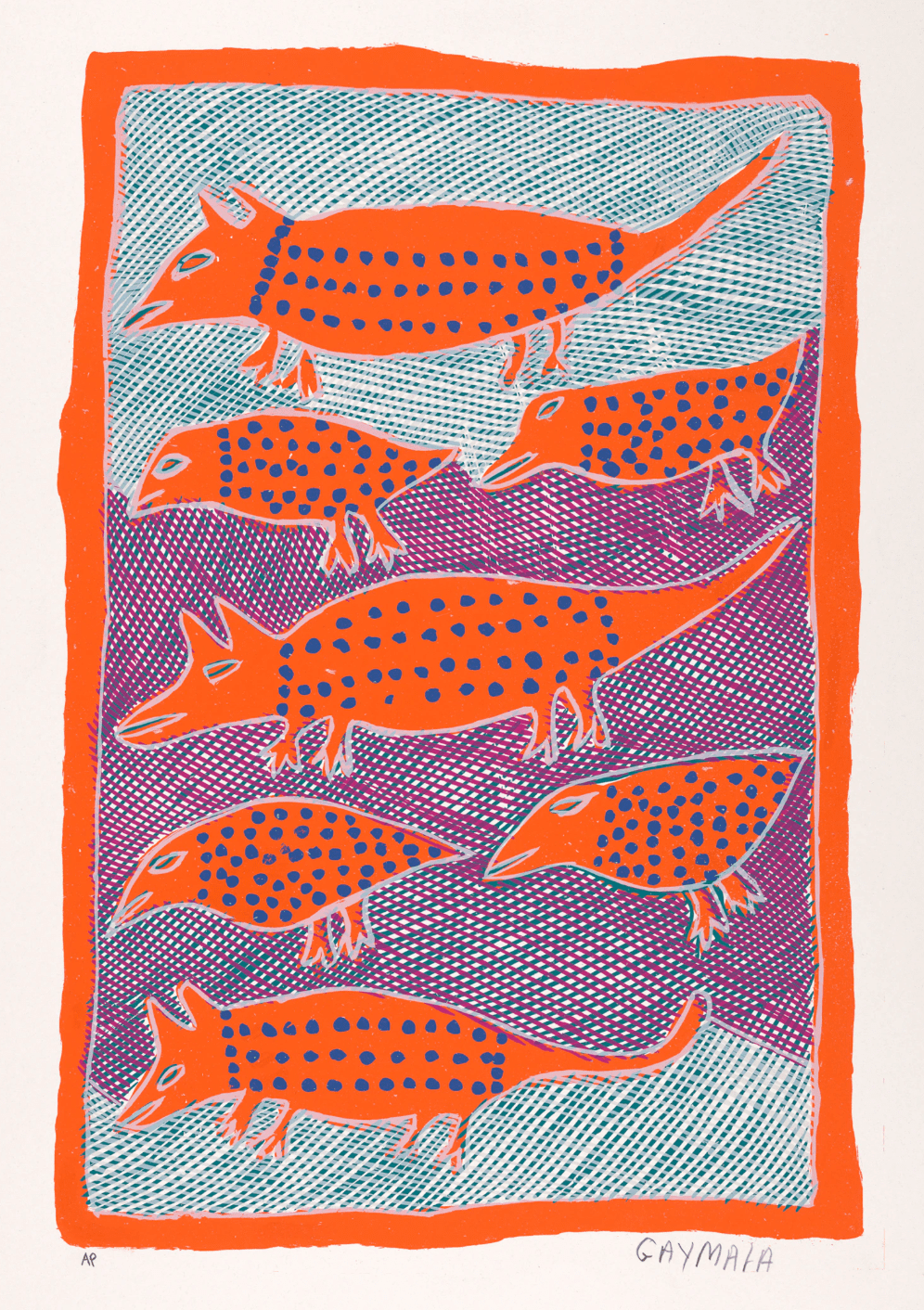
Traditionally clan styles were taught father to son, however as mediums and materials changed so did the ideas of what could be shown and how. Women had always operated closely with their male counterparts at the art centre; they were experimenting with other avenues of creative production such as printmaking. In time, they too began creating their own paintings. These works exist as freely as their creators, with depictions of familial gatherings, lived experiences and the natural connectedness that exists around us. These women in community were daughters or nieces to great male artists, and those father-daughter relationships would go on to inform the rising wave of female artists we see coming out of community. Artists like Nyapanyapa Yunupiŋu, daughter of Muŋgurrawuy Yunupiŋu, produce layered linework, reminiscent of the twinkling sea of stars that she and her family would gaze under, and of the friction of injuries and life while on country. This star motif would be introduced as gan’yu. Similarly, her sister Gulumbu Yunupiŋu also experimented with depictions of the celestial as a uniting sentient skyscape. Their works stand as testaments to their own skill and the skill of those that shaped this space before. It’s important to understand that the art coming out of community exists not just as a form of cultural continuation but also as a means of diplomatic agency—a way of sharing story and cultural trade. For Yolŋu people, their art making practices have opened opportunities for community to selfdetermine and work collaboratively across not only the Northern Territory but indeed, across the globe.
The want to experiment, and the drive for adaption fostered within community by leaders such as Djambawa Marawili and the Buku-Larrŋgay Mulka Art Centre alike, have opened new pathways for artists in community, with entire families and their works represented in institutions worldwide. It is this very boldness and assuredness of self and one’s belonging to country that exudes from every work throughout the show. The exhibition title is evocative of the power of community, of culture and country and the strength of her custodians. Cara also discussed the choice of words for the title; chief among them was ‘Power’ and what that could mean. Power can exist quietly, sat upon a plinth, or hung on a wall, it can be “poetry rather than violence,” it can be the enduring want to share and the persistence to understand another perspective. “There has always been the deliberate extension of understanding and sharing to Balanda and the greater world … This is what power can be. Sharing through art to entice people into conversations of understanding,” Cara says.
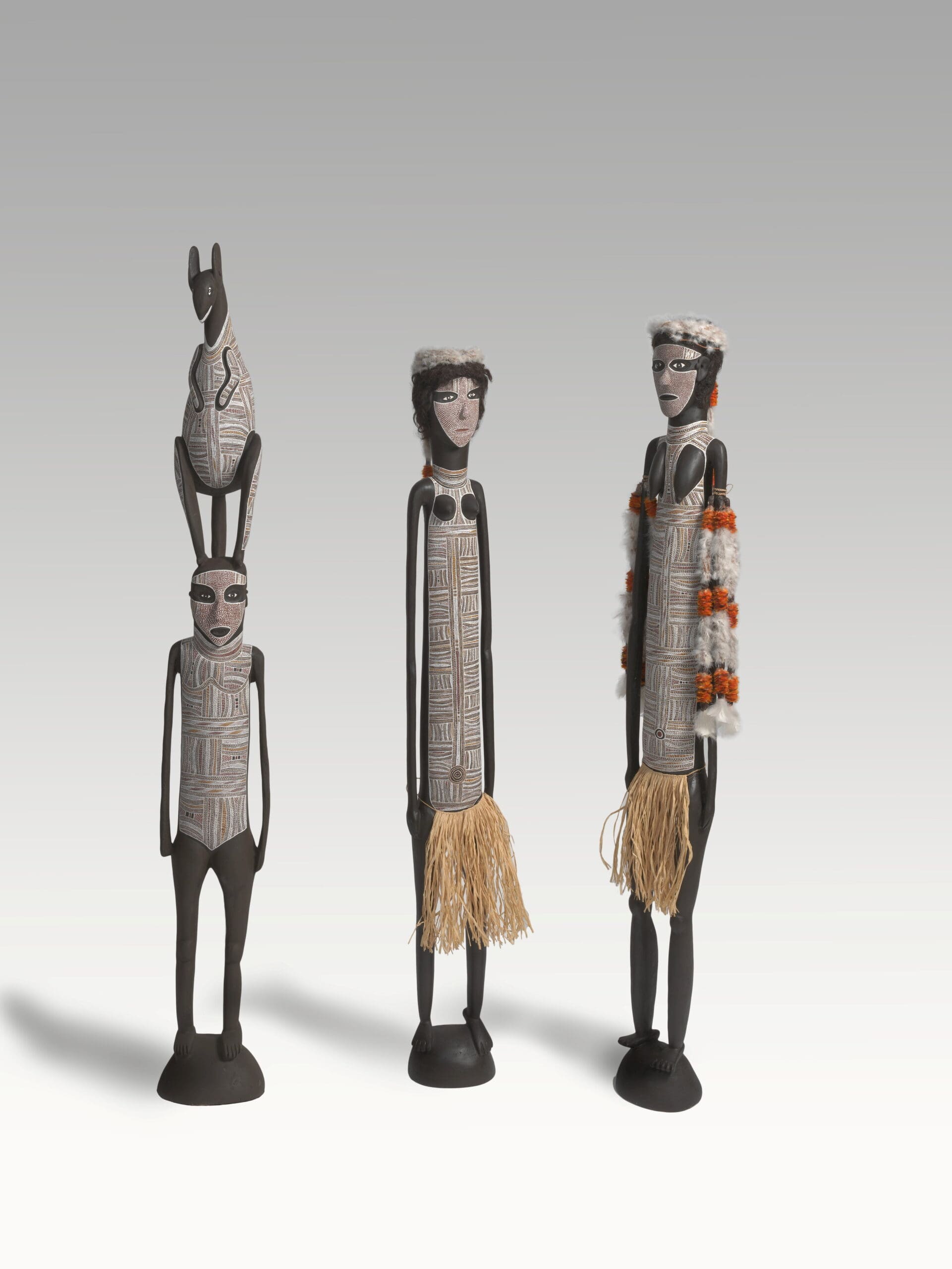
The featured artists were selected in collaboration with Buku-Larrŋgay Mulka Art Centre, the wider Yolŋu community as well as the AGNSW curatorial team to cover the broad spectrum of talent that continues to blossom out of Yirrkala. The selected body of works truly encapsulates the ingenuity of the creative spirit coming out of community across time. It exists as a culmination of decades of enduring community and institutional collaboration celebrating shared accomplishments that benefit this nation’s cultural and political landscape. The works speak to the ongoing cultural strength that underpins Indigenous ways of being and understanding. Broad, emboldened brushstrokes and deep, warm, earthy tones give form to spirit and story, shared down across generations from Yirrkala and now to the wider public at the AGNSW, in Sydney.
Yolŋu power: the art of Yirrkala
Art Gallery of New South Wales
(Sydney/Gadigal Country NSW)
Until 6 October.
This article was originally published in the July/August 2025 print edition of Art Guide Australia.

